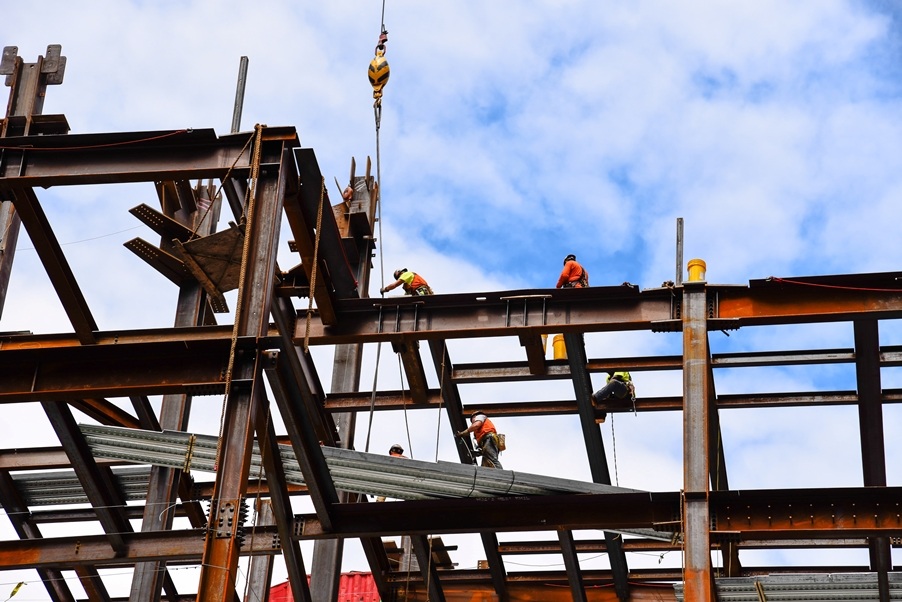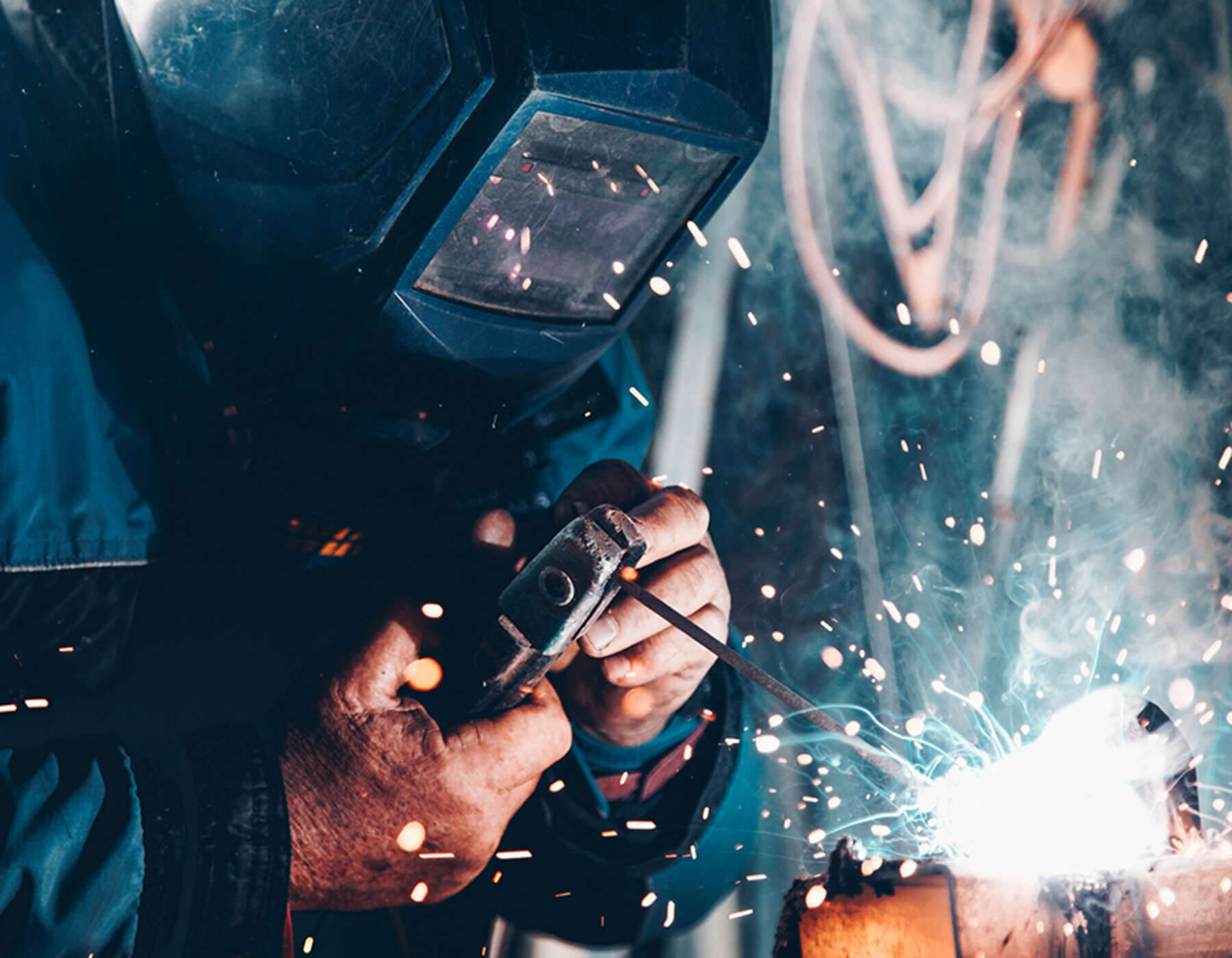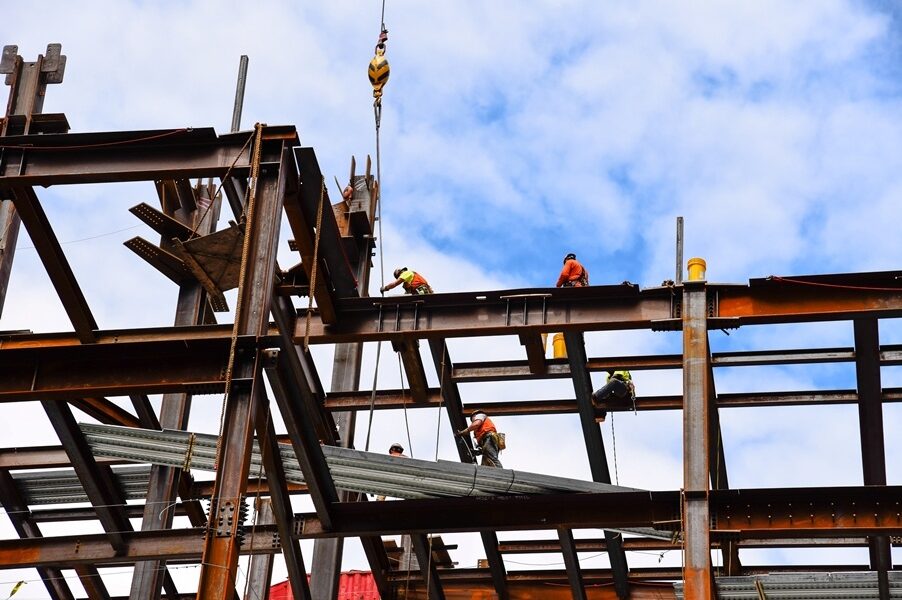
Structural steel can be found everywhere, across a range of industry sectors, projects, and products.
However, a professional steel fabricator is needed to transform standard sheet metal into these bespoke products, and structural steel fabrication requires several steps and stages to achieve this.
It is these series of processes and procedures that as specialist fabricators, the team at Morfabrication use to manufacture metal structures from steel.
Fabrication processes vary depending on the project requirements; however, they can involve cutting, bending, welding, etc.
In this post we look at the benefits of structural steel and some of the fabrication processes involved in manufacturing in more depth.
What is fabricated structural steel?
Structural steel is a common material across sectors due to its incredible strength, durability, and heat resistance. It is also easy to fabricate to meet exact specifications, supporting the construction of bridges, homes, house extensions, factories, and architectural designs.
Structural steel fabrication uses advanced industrial equipment, tools, and machinery to cut, bend, and shape steel to create different structures and products.
It is the process of taking raw materials and components and putting them through a series of processes to turn them into a finished product.
Structural steel fabrication is used in manufacturing, construction, energy, mining, automotive, shipbuilding, aerospace, and more. It produces I-beams, columns, staircases, gates, floor joists, ladders, racks, grating, etc, making it a versatile, robust, and reliable material suitable for many applications.
Process of Structural Steel Fabrication
Numerous stages exist in the fabrication process, and not all of these will be required for your project to create various structural shapes, frameworks, and formations.
These intricate and detailed processes require varying levels of skills, equipment, and machinery.
The process of steel fabrication involves sheet metal fabrication services such as:
Design – This is the initial concept stage, where projects and products are designed using CAD drawings with detailed specifications and calculations added so steel can be manufactured to meet the required specifications.
Material selection – once the design has been agreed, you will then need to assess the materials required, i.e., stainless steel, copper, galvanised steel, etc, and ensure all materials are ordered.
From here, the fabrication process begins:
Cutting – cutting is often carried out through CNC machining (although some cuts can also be carried out by hand). Steel is cut to desired lengths using laser cutting techniques or water jets. (Check out our latest post on Steel Metal Gauges, which looks at measuring steel and the charts involved to ensure you get this right.)
Shot blasting – helps to remove any impurities from the steel.
Bending – bending involves section, roll, plate, or tube bending to help create the desired shape. Bending allows us to create curved edges as well as rigid and straight shapes, creating a smooth finish that won’t break or crack when in use.
Punching/stamping/shearing—From piercing holes to creating specific shapes on the metal to trimming excess metal from the product, fabricators will use a range of specialist tools and machinery to manufacture to set design specifications.
Welding – one of the most commonly used fabrication techniques. It allows for various sections to be attached together using either TIG or MIG welding techniques. Creating stability and rigidness, welding involves melting materials, which, when cooled, solidify together.
Quality checking—At the end of the fabrication process, quality checks (testing and inspection) will be carried out to ensure that the structural steel meets all the specifications.
Finishing—What finishing is required to add extra layers of protection to the structural steel, i.e., powder coating, to provide additional corrosion resistance? Note: Different coatings will be required at different times for different projects.
Delivery, assembly, installation – how will the structural steel be transported? Is it a complete structure, or will it be assembled in place and require welding?
Benefits of Fabricating Steel
- Cost-effective – steel is incredibly strong and relatively inexpensive, making it excellent value for money.
- Fabrication processes take place at a factory unit, so structures come to you complete or semi-complete and ready for installation.
- Low maintenance – steel requires very little maintenance, offering you longevity.
- Appearance—Steel is aesthetically pleasing, whether you opt for a particular finish, such as powder coating or not.
- Environmentally friendly – steel can be reused and recycled numerous times.
- Strong and malleable – steel can be customised to meet exact project specifications without losing its core strength or durability.
Sheet Metal Fabricators
Structural steel fabrication requires precision and skill, which is why it is vital that you work with a company that has the experience and the right tools and equipment to do the job.
You need to plan what you need and include a budget, which will allow the fabrication team to better understand your requirements, the purpose of the structure, and how best to meet these specifications.
Make sure to check their previous projects, capabilities, online testimonials, and more.
Finding the right fabricator for you should take more than Googling Sheet Metal Fabrication Near Me.
At Morfabrication, we fabricate bespoke and standard designs, transforming standard steel sections into high-quality steel structures.
Using innovative technology to enhance products, our fabrication process is seamless and provides you with efficiency.
Working with experts in structural steel and with a range of steel products and fabrication services available, contact a member of our team today to find out how we can help you with your next steel project.

